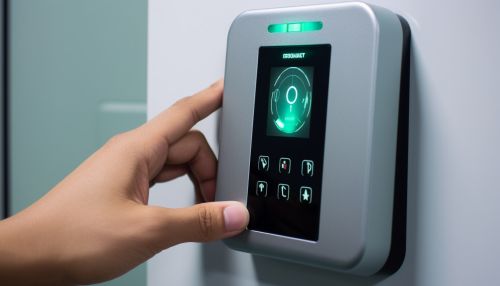Time and Attendance
Overview
Time and attendance systems are used by organizations to record working hours of employees for the purpose of payroll. These systems may be integrated into larger human resource systems. In the past, mechanical time clocks were used, but with the advent of technology, digital time and attendance systems have become prevalent.


History
The concept of tracking employee work hours has been in existence since the Industrial Revolution. The first mechanical time clock was invented by Willard Bundy, a jeweler in Auburn, New York, in 1888. His brother Harlow Bundy established the Bundy Manufacturing Company, which was later incorporated into the International Business Machines Corporation (IBM) in 1924. The mechanical time clock was a significant development in time and attendance systems, and it laid the foundation for the more sophisticated systems used today.
Types of Time and Attendance Systems
There are several types of time and attendance systems, including:
- Time Clocks: These are the traditional punch clocks that use a card to record the in and out times of an employee.
- Automated Systems: These systems use biometric data such as fingerprints, facial recognition, or retina scans to record employee attendance.
- Web-Based Systems: These systems allow employees to clock in and out using a web browser, eliminating the need for specialized hardware.
- Mobile Systems: These systems use a mobile application to record time and attendance, allowing employees to clock in and out remotely.
Functionality
Time and attendance systems record when employees start and end their workdays, as well as the department where the work is performed. However, it’s not just businesses that use these systems. Many large corporations use time and attendance systems to ensure compliance with labor regulations regarding proof of attendance.
These systems have various features including:
- Employee Scheduling: Allows managers to create and manage an employee schedule.
- Time Tracking: Tracks employee work hours.
- Absence Management: Helps manage employee leave, sick days, and vacations.
- Overtime Management: Helps manage overtime hours to ensure compliance with labor laws.
- Reporting: Provides detailed reports on employee attendance, hours worked, and more.
Benefits
Time and attendance systems provide several benefits to organizations. They can help reduce the amount of paperwork and manual record-keeping, thus saving time and reducing errors. They also help ensure compliance with labor laws by accurately tracking overtime and ensuring that employees are not working too many hours.
In addition, these systems can provide detailed labor data to help management make informed decisions about labor costs and workforce management. For example, they can help identify patterns of late arrivals or early departures, frequent absences, or other issues that may be affecting productivity.
Challenges
Despite the benefits, time and attendance systems can also present challenges. For instance, privacy concerns arise when biometric data is used. Employees may be uncomfortable with having their fingerprints or facial recognition data stored by their employer.
Another challenge is system integration. If the time and attendance system does not integrate well with other systems such as payroll or human resources, it can create more work and potential errors.
Future Trends
The future of time and attendance systems lies in further technological advancement. Cloud-based systems are becoming more popular due to their scalability and flexibility. Mobile applications are also becoming more prevalent as more businesses adopt remote work policies.
Furthermore, advances in biometric technology are expected to drive the future of time and attendance systems. Biometric time clocks that use facial recognition or hand geometry are becoming more common.
